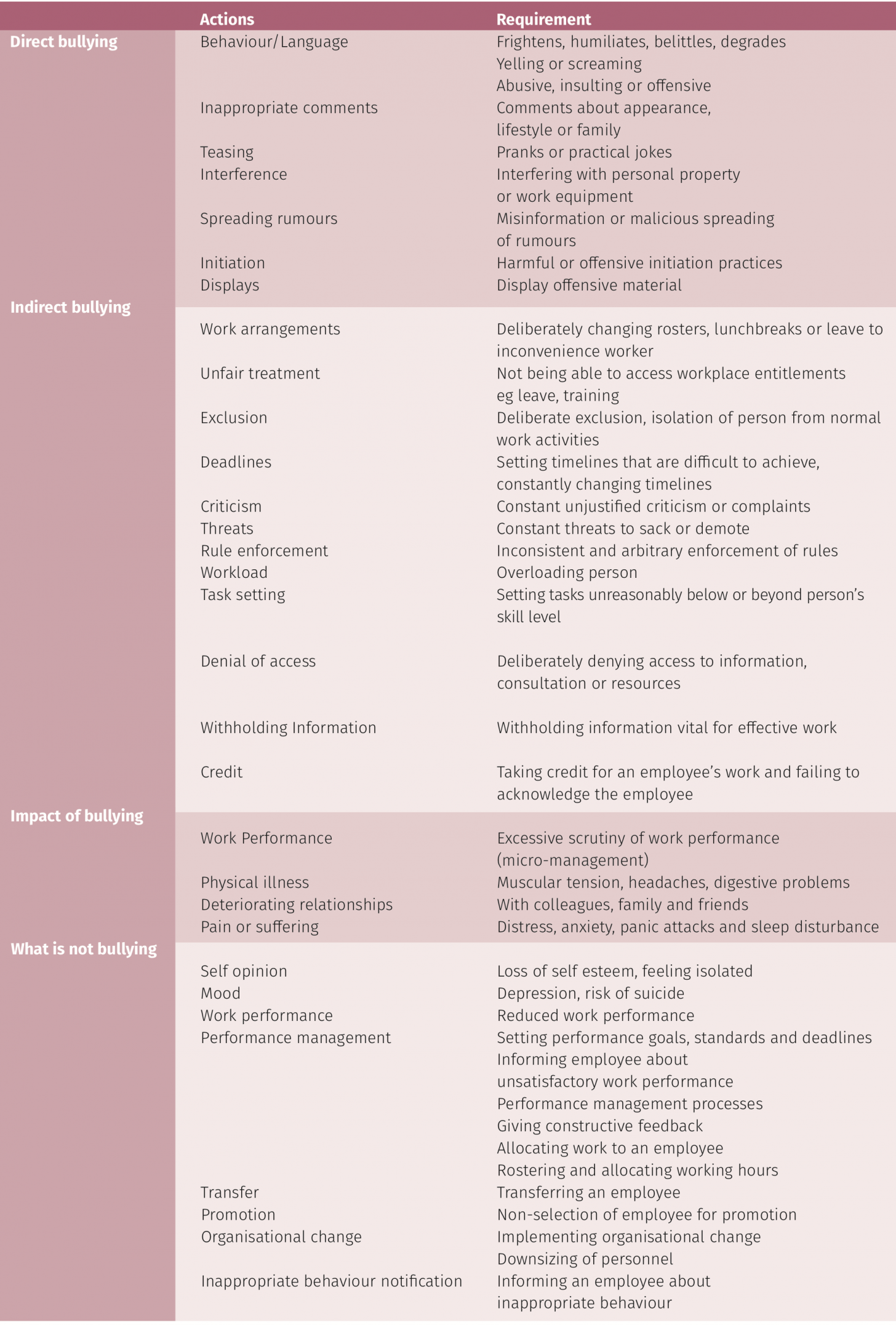If you work in ECEC, you’re at high risk of being bullied.Research by Macquarie University last year found workplace bullying in the ECEC sector is a “pervasive and significant issue in Australia and globally”.
A study conducted by Roy Morgan, the State of Work 2018, revealed those working in the ECEC sector were the second most likely of all employment sectors surveyed to report bullying, with 40.6% claiming to have experienced bullying.
ECEC came second only to those working in farming, where 52.6% of respondents experienced bullying behaviour in the workplace.
What is bullying?
The Fair Work Act says that a worker is bullied if an individual or group of individuals repeatedly behave unreasonably towards a worker and that behaviour creates a risk to their health and safety. It is irrelevant whether the person bullying another intended to do so. The IEUA NSW/ACT Branch has produced a checklist of bullying behaviours:
What to do if you’re being bullied
- Provide details of the perpetrator/s of the alleged bullying and harassment.
- Document times, dates, places that the alleged bullying and harassment behaviour occurred and names of any witnesses that may be able to corroborate the alleged behaviour.
- Provide specific details of the alleged bullying and harassment in line with the following types of behaviour:
- abusive/insulting/offensive language or comments
- making derogatory comments or taunts about someone’s race
- asking intrusive questions about someone’s personal life, including his or her sex life
- aggressive and intimidating conduct
- belittling or humiliating comments
- victimisation
- practical jokes
- unjustified criticism/complaints
- deliberate exclusion from work-related activities
- withholding of information that is vital for effective work performance
- setting unreasonable timelines or constantly changing deadlines
- setting tasks that are unreasonably below or beyond a person’s skill level
- denial of access to information/supervision/consultation/resources to the detriment of the employee
- spreading misinformation or malicious rumours, and
- changing work arrangements/rosters/leave to deliberately inconvenience an employee.
4.Document the effect on you of the alleged bullying and harassment behaviours, for example:
- distress, anxiety, panic attacks, depression
- physical illness, for example headaches, fatigue, muscular tension, insomnia, high blood pressure
- loss of self-esteem or self-confidence, and
- feelings of isolation.
5.Provide details of your desired result from the employer relating to the alleged bullying and harassment behaviour. What outcome are you seeking?
If you think you are being bullied, contact our IEU organiser for advice.
References
McFarland, L., Bull, R., Cumming, T. et al. Workplace Bullying in Early Childhood Education Settings: Prevalence and Protective Factors. IJEC (2022). www.doi.org/10.1007/s13158-022-00341-y
www.thesector.com.au/2018/11/12/40-6-per-cent-of-ecec-professionals-experience-workplace-bullying/
www.thesector.com.au/2021/03/05/workplace-bullying-in-the-early-childhood-sector/
www.cela.org.au/publications/amplify!-blog/march-2020/preventing-bullying-in-ecec




































































































































